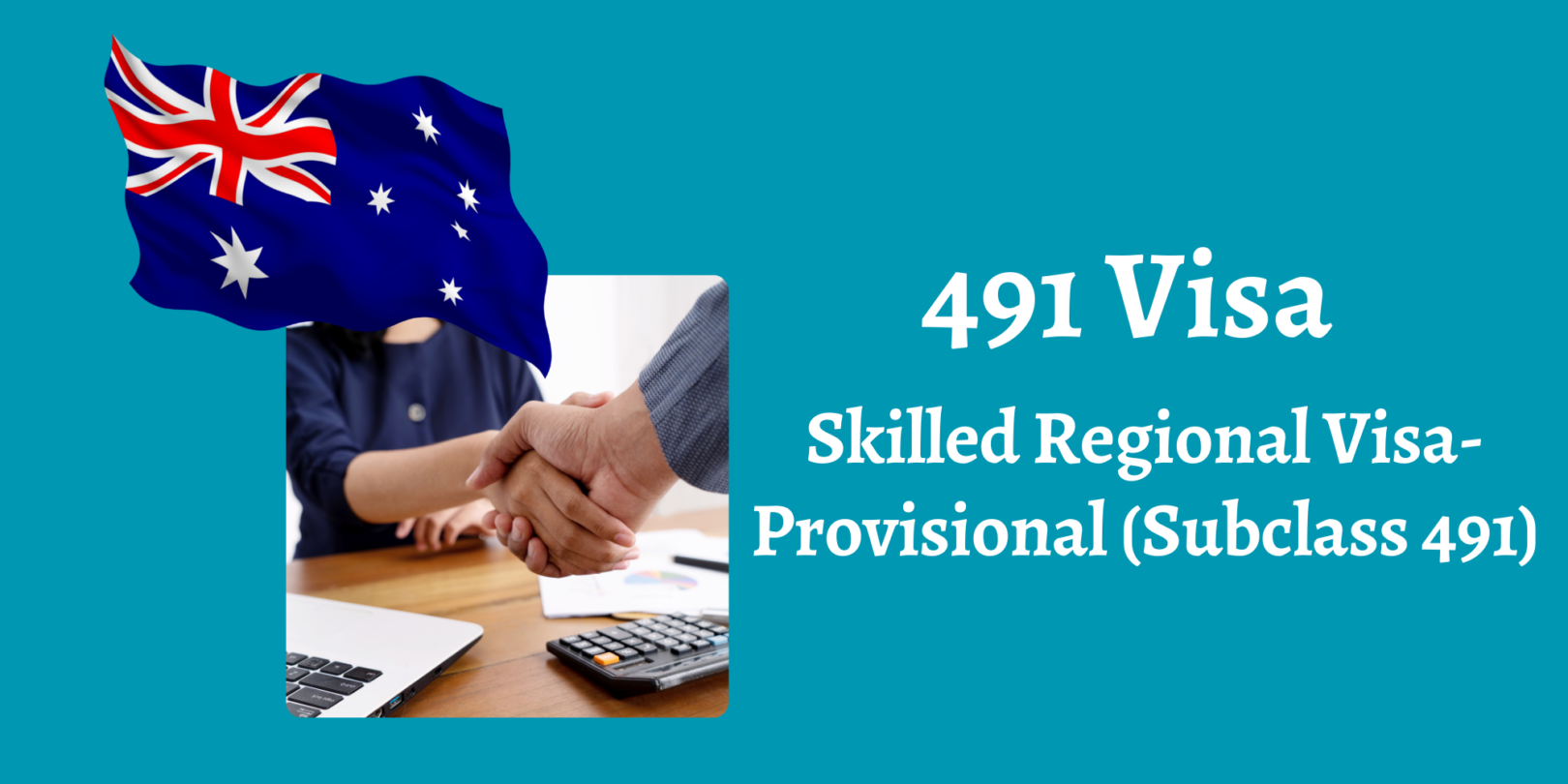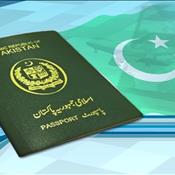
The Australia Skilled Independent Visa (Subclass 189) stands as a coveted pathway for skilled professionals across the globe aspiring to secure permanent residency in Australia. This points-tested stream empowers individuals with in-demand skills to live and work anywhere within Australia without the necessity of an employer, state, or family sponsorship. The Subclass 189 visa operates through SkillSelect, Australia's official online platform that manages skilled migration. To be eligible for this prestigious Australia Skilled Independent Visa, applicants must achieve a minimum of 65 points based on a range of criteria, including age, English language proficiency, educational qualifications, and skilled work experience. This detailed guide will navigate you through the intricacies of the Australia Skilled Independent Visa 2025, ensuring you thoroughly understand the eligibility criteria, the points test, the application process, and other crucial aspects.
Understanding the Australia Skilled Independent Visa (Subclass 189)
The Subclass 189 visa is a cornerstone of Australia's General Skilled Migration (GSM) program, designed to attract highly skilled individuals who can contribute to the Australian economy. Unlike other skilled visas that require sponsorship, the Australia Skilled Independent Visa grants successful applicants the freedom to choose where they live and work in Australia. This independence makes it a highly desirable option for many skilled migrants. The points-tested stream ensures that only the most qualified candidates, who meet the stringent criteria and achieve the required points, are invited to apply for this permanent residency visa.
Key Eligibility Requirements for the Subclass 189 Visa in 2025
To embark on your journey towards Australian permanent residency through the Australia Skilled Independent Visa (Subclass 189), you must satisfy several fundamental eligibility criteria. These requirements are meticulously designed to ensure that successful applicants possess the skills and attributes necessary to thrive in the Australian workforce and society.

Age Requirement
Applicants for the Subclass 189 visa must be under 45 years of age at the time of receiving an invitation to apply. Points are awarded based on your age, with the highest points allocated to those aged between 25 and 32.
| Age Group | Points Awarded |
|---|---|
| 18-24 years | 25 points |
| 25-32 years | 30 points |
| 33-39 years | 25 points |
| 40-44 years | 15 points |
English Language Proficiency
Demonstrating competent English language skills is a non-negotiable requirement for the Australia Skilled Independent Visa. You will need to provide evidence of your English proficiency through one of the accepted English language tests, such as IELTS, PTE Academic, TOEFL iBT, Cambridge English: Advanced (CAE), or OET. A minimum score equivalent to IELTS 6.0 in each of the four components is generally required for "competent English," which yields no points in the points test. However, achieving higher scores for "Proficient English" (IELTS 7.0 in each band) or "Superior English" (IELTS 8.0 in each band) can significantly boost your points.
| English Language Proficiency Level | Equivalent IELTS Score (per band) | Points Awarded |
|---|---|---|
| Competent English | 6.0 | 0 points |
| Proficient English | 7.0 | 10 points |
| Superior English | 8.0 | 20 points |
Skilled Occupation and Skills Assessment
Your nominated occupation must be listed on the relevant Skilled Occupation List (SOL) applicable to the Subclass 189 visa. For the Australian Skilled Independent Visa, the Medium and Long-term Strategic Skills List (MLTSSL) is typically relevant. Furthermore, you must obtain a positive skills assessment from the designated assessing authority for your nominated occupation. The skills assessment verifies that your qualifications and experience meet Australian standards. The processing time for skills assessments can vary depending on the assessing body.
Work Experience
Points are awarded for your skilled work experience, both in Australia and overseas, in your nominated occupation or a closely related occupation. The work experience must have been gained within the last 10 years and must be for at least 20 hours per week of paid employment.
| Overseas Skilled Employment (within the last 10 years) | Points Awarded |
|---|---|
| Less than 3 years | 0 points |
| 3-5 years | 5 points |
| 5-8 years | 10 points |
| 8 years or more | 15 points |
| Australian Skilled Employment (within the last 10 years) | Points Awarded |
|---|---|
| Less than 1 year | 0 points |
| 1-3 years | 5 points |
| 3-5 years | 10 points |
| 5-8 years | 15 points |
| 8 years or more | 20 points |
The maximum points that can be claimed for combined overseas and Australian work experience is 20 points.
Educational Qualifications
Your highest educational qualification plays a significant role in the points test. Qualifications obtained from Australian educational institutions or qualifications from overseas institutions that are of a recognized standard are considered.
| Highest Qualification | Points Awarded |
|---|---|
| Doctorate (PhD) | 20 points |
| Bachelor's degree (including Honours) | 15 points |
| Diploma or trade qualification (completed in Australia) | 10 points |
| An award or qualification recognized by the assessing authority | 10 points |
Other Factors Contributing to Points
Beyond the core criteria, several other factors can contribute to your overall points test score for the Australia Skilled Independent Visa:
- Australian Study Requirement: If you have completed one or more degrees, diplomas, or trade qualifications in Australia that meet specific requirements (at least two academic years of full-time study), you may be awarded 5 points.
- Study in a Regional Area: If your Australian qualification was obtained from an educational institution located in a designated regional area of Australia, and it meets the Australian study requirement, you may be awarded an additional 5 points.
- Partner's Skills: If your spouse or de facto partner is also an applicant for the same Subclass 189 visa and meets certain criteria (under 45 years of age, competent English, nominated a skilled occupation on the same list, and has a positive skills assessment), you can claim 10 points. If your partner has competent English but does not have a positive skills assessment for a nominated occupation, you may still be eligible for 5 points. If your partner is an Australian citizen or permanent resident, or you do not have a partner, you can also claim 10 points.
- Professional Year in Australia: Completing a Professional Year in your nominated skilled occupation in Australia within the 48 months before the invitation can earn you 5 points.
- Credentialed Community Language (CCL): Holding a credential from the National Accreditation Authority for Translators and Interpreters (NAATI) for interpreting or translating can earn you 5 points.
The Points Test in Detail for the Subclass 189 Visa
The points test is a crucial element of the Australia Skilled Independent Visa (Subclass 189) application process. It is a system used by the Australian government to assess the suitability of skilled migrants based on various factors. Achieving a minimum of 65 points does not guarantee an invitation to apply; the higher your score, the greater your chances of receiving an Invitation to Apply (ITA) during the regular invitation rounds.
Summary of Points Test Factors:
| Factor | Maximum Points |
|---|---|
| Age | 30 |
| English Language Proficiency | 20 |
| Skilled Employment (Overseas) | 15 |
| Skilled Employment (Australia) | 20 |
| Educational Qualifications | 20 |
| Australian Study Requirement | 5 |
| Study in a Regional Area | 5 |
| Partner's Skills and Qualifications | 10 |
| Professional Year in Australia | 5 |
| Credentialed Community Language (CCL) | 5 |
It is essential to accurately calculate your points based on your circumstances. Online Australia PR points calculators can be helpful tools in this process. Remember that providing false or misleading information in your Expression of Interest (EOI) can lead to the refusal of your visa application.
Step-by-Step Application Process for the Subclass 189 Visa in 2025
The application process for the Australian Skilled Independent Visa (Subclass 189) involves several key stages that must be followed meticulously.
Step 1: Identify Your Occupation and Confirm Eligibility
The first step is to determine if your occupation is listed on the relevant Skilled Occupation List (currently, primarily the MLTSSL for the Subclass 189 visa). You also need to ensure that you meet the basic eligibility requirements, including age, English language proficiency, and other criteria.
Step 2: Obtain Your Skills Assessment
You must apply to the relevant assessing authority to have your skills assessed for your nominated occupation. This process typically involves submitting your educational certificates, transcripts, work experience letters, and other supporting documents. The outcome of your skills assessment will be a formal letter confirming whether your skills meet Australian standards.
Step 3: Take an English Language Test
If you do not hold a passport from the UK, USA, Canada, New Zealand, or Ireland (in which case you may be exempt), you will need to take an accepted English language test and achieve the required score. Ensure that the test results are valid at the time of invitation and application.
Step 4: Calculate Your Points
Once you have your skills assessment and English test results (if applicable), you can calculate your total points based on the points test factors. Aim for the highest possible score to increase your chances of receiving an invitation.
Step 5: Lodge an Expression of Interest (EOI)
You need to submit an EOI through SkillSelect. In your EOI, you will provide detailed information about your skills, qualifications, work experience, English language ability, and other relevant details. You will also nominate your occupation and indicate your visa subclass of interest (Subclass 189).
Step 6: Await an Invitation to Apply (ITA)
The Department of Home Affairs conducts regular invitation rounds, where they invite the highest-ranking EOIs based on their points score and occupation. The waiting time for an invitation can vary depending on the demand for your occupation and your points score. Some occupations with higher demand may have higher minimum points scores required for invitation.
Step 7: Lodge Your Visa Application
If you receive an ITA, you will have a specific timeframe (usually 60 days) to lodge your complete visa application online through the ImmiAccount portal. You will need to provide all the required supporting documents, including identity documents, skills assessment, English test results, work experience evidence, educational qualifications, health and character clearances, and more.
Step 8: Undergo Health and Character Checks
As part of the visa application process, you and any family members included in your application will need to undergo medical examinations and provide police clearance certificates1 from every country where you have lived for 12 months or more in the past 10 years.2
Step 9: Await the Visa Outcome
The Department of Home Affairs will assess your visa application. Processing times can vary depending on various factors, including the completeness of your application and the current processing workload. You can monitor the status of your application through your ImmiAccount.
Step 10: Visa Grant
If your application is successful, you will be granted the Subclass 189 visa, which is a permanent residency visa. You will be notified of the visa grant in writing and will be provided with information about your visa conditions and your entry into Australia.
Skilled Occupation Lists for the Subclass 189 Visa in 2025
The Skilled Occupation Lists (SOLs) are crucial for determining your eligibility for skilled migration visas, including the Australia Skilled Independent Visa (Subclass 189). These lists specify the occupations that are in demand in the Australian labor market. The primary list relevant to the Subclass 189 visa is the Medium and Long-term Strategic Skills List (MLTSSL). Your nominated occupation must be on this list at the time you are invited to apply.
The SOLs are subject to periodic reviews and updates by the Australian government to reflect changing labor market needs. It is essential to check the latest version of the MLTSSL on the Department of Home Affairs website to ensure your occupation is included. Each occupation on the list has a corresponding ANZSCO (Australian and New Zealand Standard Classification of Occupations) code and a designated assessing authority responsible for skills assessments for that occupation.
English Language Requirements in Detail for the Subclass 189 Visa
Demonstrating the required level of English language proficiency is a fundamental prerequisite for the Australia Skilled Independent Visa (Subclass 189). The Australian government accepts scores from several recognized English language tests:
- International English Language Testing System (IELTS): Both General Training and Academic modules are accepted.
- Pearson Test of English (PTE) Academic
- Test of English as a Foreign Language Internet-Based Test (TOEFL iBT) (Tests taken before July 26, 2023)
- Cambridge English: Advanced (CAE) (Paper-based test results from February 12, 2024 onwards)
- Occupational English Test (OET) (for certain health professionals)
The required minimum scores vary depending on the level of English proficiency claimed, which also determines the points awarded in the points test. It is crucial to achieve the minimum required score in each of the four components of the chosen test. Ensure that your test results are valid (usually within three years of the application date).
The Role of State Nomination for the Subclass 189 Visa
While the Australia Skilled Independent Visa (Subclass 189) is unsponsored, meaning it does not require nomination by a state or territory government, state nomination is an option under other skilled migration visas, such as the Subclass 190 (Skilled Nominated) visa. State nomination can provide additional points and increase your chances of receiving an invitation. However, for the Subclass 189 visa itself, you rely solely on meeting the eligibility criteria and achieving a competitive score in the points test.

Visa Processing Times for the Subclass 189 Visa in 2025
The processing times for the Australia Skilled Independent Visa (Subclass 189) can vary significantly based on several factors, including the volume of applications, the completeness of your application, and the processing priorities of the Department of Home Affairs. Generally, processing times can range from several months to over a year.
According to recent data, a significant portion of subclass 189 visa applications are finalized within 6 to 12 months. However, some applications may take longer. Factors that can influence processing times include:
- Completeness of your application: Ensuring all required documents are submitted correctly and completely at the time of application can help avoid delays.
- Demand for your occupation: Occupations with higher demand may experience faster processing.
- Your points score: Applicants with higher points scores may receive invitations and have their applications processed more quickly.
- Health and character checks: Delays in completing health examinations or obtaining police clearance certificates can prolong the processing time.
It is essential to monitor the official processing time guidelines provided by the Department of Home Affairs on their website for the most up-to-date information.
Costs Associated with the Subclass 189 Visa in 2025
Applying for the Australia Skilled Independent Visa (Subclass 189) involves various costs that you need to be aware of:
- Visa Application Fee: The base application fee for the primary applicant is currently AUD 4,640. There are additional fees for dependent family members included in the application (AUD 2,320 for each additional applicant over 18 and AUD 1,160 for each additional applicant under 18). These fees are non-refundable, even if your application is unsuccessful.
- Skills Assessment Fee: The cost of skills assessment varies depending on the assessing authority and the nominated occupation. Fees can range from AUD 500 to AUD 2,000 or more.
- English Language Test Fee: The fees for accepted English language tests vary. For example, IELTS and PTE Academic typically cost around AUD 350-400.
- Health Examination Costs: The costs for medical examinations also vary depending on the clinic and the number of applicants. You can expect to pay around AUD 300-500 per person.
- Police Clearance Certificate Costs: The cost of obtaining police clearance certificates depends on the country and the process involved.
- Other Potential Costs: You may also incur costs for document translation, certification, and migration agent fees if you choose to use one.
It is advisable to budget for all these potential expenses when planning your Subclass 189 visa application.
Benefits of Obtaining the Subclass 189 Visa in 2025
Securing the Australia Skilled Independent Visa (Subclass 189) offers numerous benefits, making it a highly sought-after pathway to Australian permanent residency:
- Permanent Residency: The Subclass 189 visa grants you permanent resident status in Australia, allowing you to live, work, and study in the country indefinitely.
- Freedom to Live and Work Anywhere: Unlike sponsored visas, the Subclass 189 visa allows you to live and work in any state or territory of Australia without restrictions.
- Pathway to Citizenship: As a permanent resident, you become eligible to apply for Australian citizenship after meeting the residency requirements.
- Sponsor Eligible Relatives: You can sponsor eligible family members to join you in Australia as permanent residents.
- Access to Healthcare and Education: Permanent residents have access to Australia's public healthcare system (Medicare) and can enroll in educational institutions.
- Social Security Benefits: After a qualifying period, permanent residents may be eligible for certain social security benefits.
- Travel Freedoms: You can travel to and from Australia freely for five years from the date your visa is granted. After this period, you will need a Resident Return Visa (RRV).
More Travel News
-
 11-Nov-2021E Visa Countries List of Pakistani Passport 2021
11-Nov-2021E Visa Countries List of Pakistani Passport 2021 -
 22-Feb-2020What is the Best Time to Visit Pakistan for Foreigner Tourist
22-Feb-2020What is the Best Time to Visit Pakistan for Foreigner Tourist -
 21-Aug-2023Saudi Arabia Introduces New Flexibility in Visa Regulations for Foreign Residents
21-Aug-2023Saudi Arabia Introduces New Flexibility in Visa Regulations for Foreign Residents -
 02-Aug-2021Thousands of Animal Human Bones in Saudi Arabia Cave
02-Aug-2021Thousands of Animal Human Bones in Saudi Arabia Cave -
 26-Apr-2025Qatar Airways Announces All-Inclusive FIFA World Cup 2026 Tour Packages
26-Apr-2025Qatar Airways Announces All-Inclusive FIFA World Cup 2026 Tour Packages -
 04-Mar-2020Due to Coronavirus Saudi Arabia bans its residents from Umrah
04-Mar-2020Due to Coronavirus Saudi Arabia bans its residents from Umrah -
 16-Mar-2022Umrah Packages Ramazan Guide 2022
16-Mar-2022Umrah Packages Ramazan Guide 2022 -
 25-Jul-2024Presidency for Religious Affairs Unveils Ambitious Plan for 2024 Umrah Season
25-Jul-2024Presidency for Religious Affairs Unveils Ambitious Plan for 2024 Umrah Season -
 11-Sep-2019Tips to Find a Good Umrah Travel Agency in Pakistan
11-Sep-2019Tips to Find a Good Umrah Travel Agency in Pakistan -
 11-Jun-2020How To Get Turkey Couple Visa Easily in 2020
11-Jun-2020How To Get Turkey Couple Visa Easily in 2020 -
 31-Jan-2025Traveling to Saudi Arabia for the First Time: What You Need to Know
31-Jan-2025Traveling to Saudi Arabia for the First Time: What You Need to Know -
 24-Sep-2025Guide to the Attestation of Umrah Contract Document for Year 2025-26 (1447AH)
24-Sep-2025Guide to the Attestation of Umrah Contract Document for Year 2025-26 (1447AH)
